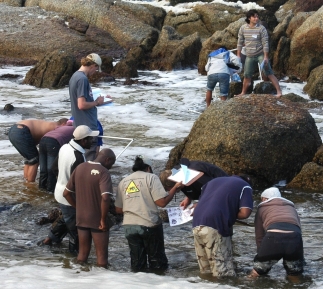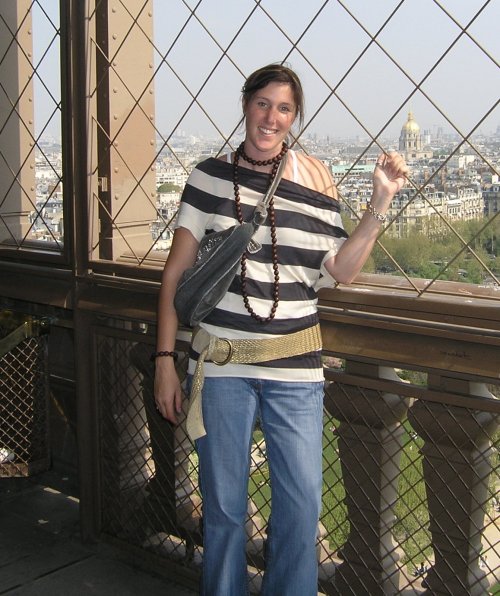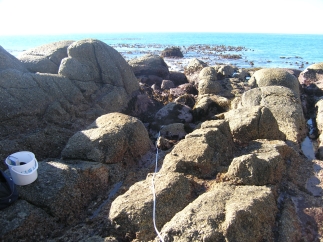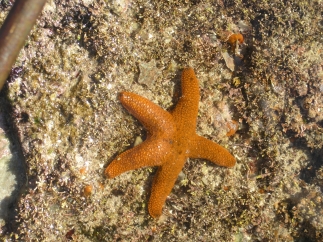Investigating long-term change in SA’s rocky shore biota
|
In the 2007 SAEON Graduate Student Network symposium, Angela led a marine field trip to introduce biodiversity students from all fields to the rigors of intertidal sampling. |
|
Angela Mead is a first-year PhD student of British origin. She has studied Marine Biology and Environmental Management to Master level in UK and Hong Kong Universities. She also has a teaching qualification in Science, teaching 11 – 19 year olds in international schools for over six years. |
|
Angela is investigating long-term changes in rocky shore biota for the coasts of South Africa. The research pictured here is at Bat Cave Rocks, East London (Picture © Angela Mead) |
|
Angela is mapping the location and intensity of a number of driving factors that are causing detectable changes in intertidal invertebrate communities, such as these starfish at Smitswinkel Bay, Cape Point (Picture © Angela Mead) |
For a PhD project that is funded in part by SAEON and the NaGISA (Natural Geography in Shore Areas) / HMAP (History of Marine Animal Populations) Institute, Angela Mead, a SAEON Elwandle Node postgraduate student, is investigating long-term changes in rocky shore biota for the coasts of South Africa.
Additionally, Angela is mapping (using GIS) the location and intensity of a number of driving factors that are causing detectable changes in intertidal invertebrate communities. This includes the impact of alien invasive species, marine pollution, commercial and subsistence level exploitation as well as climate change effects. Combining this information with the community data should facilitate the identification of ‘hotspots’ along the entirety of the South African coast that are under intense pressure from biodiversity change.
The project involves extensive surveys of the South African intertidal zone. A detailed database of quantitative count and biomass data for 2007 is being produced. Additionally, Angela is working her way through archived data from 1930 to 1940, collected within the same coastal areas by Professor John Day of the University of Cape Town (UCT) and his colleagues.
Currently the data is stored as a paper record in the Iziko Marine Museum, Cape Town. This data is being converted to an electronic format, in order to make a time point comparison in the intertidal communities between 1930 and 2007.
Long-term database for future research
It is envisioned that the rocky shore community and driving factor databases, as well as resultant GIS maps will be stored with SAEON, making a positive addition to the organisation’s ever growing collection of key databases for South African marine biomes. The databases can be added to at regular intervals within the future, to create an invaluable long-term database for future research and coastal management use.
In the 2007 SAEON Graduate Student Network symposium, Angela led a marine field trip to introduce biodiversity students from all fields to the rigors of intertidal sampling. She also facilitated a workshop for the students, where problems, limitations and solutions were discussed for the use of long-term data sets. The most important overriding message that was drawn out of the workshop is that long-term databases need to be planned with care and collected with the potential future use of that data in mind.
Detailed methodology and location records are essential in order to allow accurate future repeat surveys. The data collected needs to be accurate and quantified in order to facilitate comparisons with future data acquired.
To ensure this message is carried into the universities of South Africa as a whole, Angela intends to run similar workshops and field trips at several institutes. She firmly believes in the power of capacity building for South Africa’s future.
For more information on the research project, contact Angela on Email angelamead@hotmail.com.






